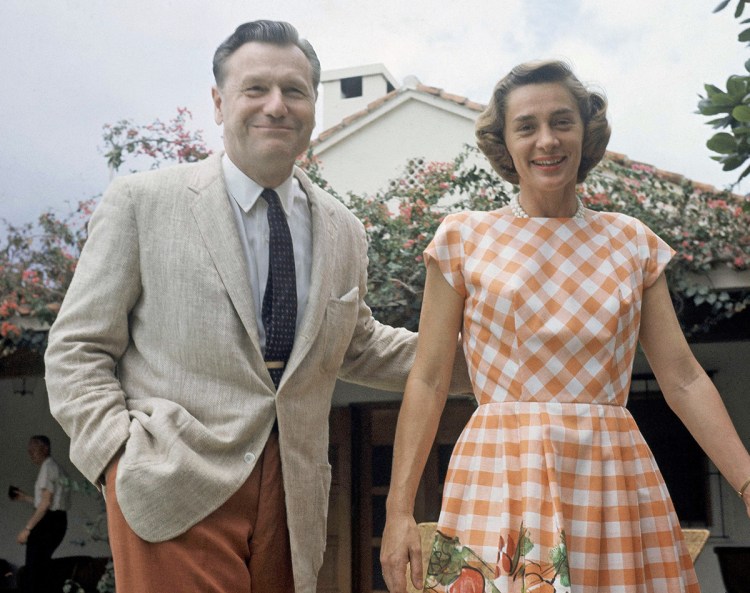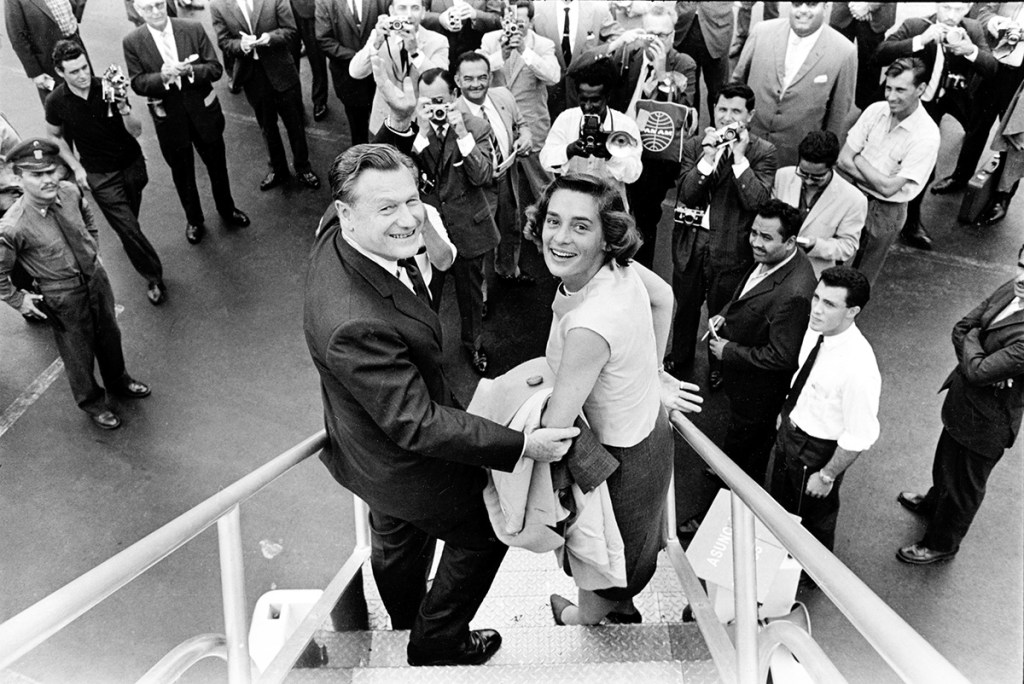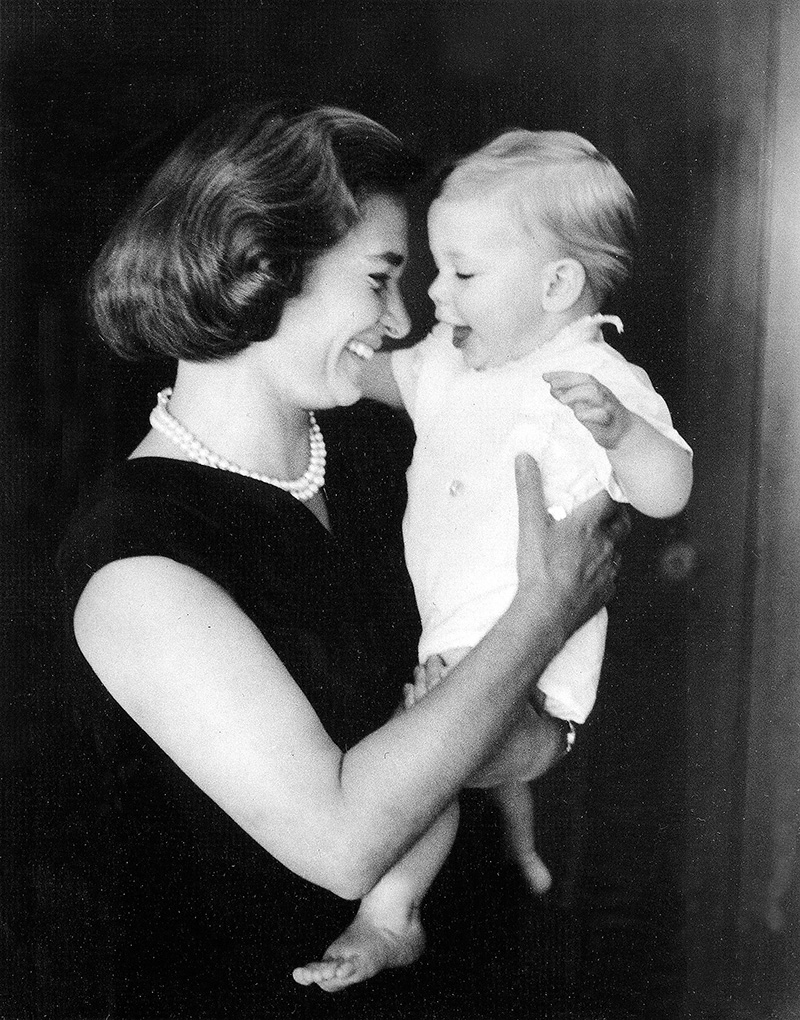Margaretta “Happy” Rockefeller, the former U.S. second lady whose marriage to Nelson Rockefeller triggered a public outrage that hampered his bid for the presidency during the 1960s, has died. She was 88.
She died Tuesday at her home in Tarrytown, New York, following a brief illness, according to the New York Times, which cited a family statement.
Tall, winsome and almost 18 years her husband’s junior, Happy Rockefeller wrestled with her image as a femme fatale who had caused the breakup of two families when she tied the knot in 1963 with the grandson of the Standard Oil Co. founder. A longtime friend and confidante to one of America’s wealthiest families, she enraged middle-class society by giving up custody over her four children to secure a divorce a month before marrying the man who later became the 41st vice president.
Happy Rockefeller, who gained her nickname for her cheery disposition as a child, earned a reputation for being guarded and media-shy. She preferred to let her husband do the talking while privately encouraging him in later years to leave politics so they could spend more time on their estate in Pocantico Hills, New York, about 25 miles (40 kilometers) north of midtown Manhattan. Her efforts were in vain for a man who had wanted to be president since he was a boy.
“After all, when you think what I had, what else was there to aspire to?” he famously said.
Hoping to dispel the image of wealth during confirmation hearings before the Senate Rules Committee in 1974, Rockefeller listed his total holdings at $218 million and said the family empire was a “myth.”
The Times cited figures in 2007 showing his grandfather, John D. Rockefeller, was the richest American ever. It said his $1.4 billion fortune at the time of death would have been worth $192 billion in 2007 when measured as a percentage of the economy.
The marriage to Nelson Rockefeller, who divorced his wife to be with Happy Murphy, as she was formerly known, was seen as a major reason for him failing to win the Republican primary nomination for president in 1964. Rockefeller, who had already missed out on getting his name on the ticket in 1960, needed President Lyndon Johnson, a Democrat who encouraged him to run in 1968, to convince Happy that a third bid was a good idea.
“I’ve talked her into letting you run,” Johnson said, according to Rockefeller in his U.S. Senate profile. He lost the nomination to Richard Nixon in 1968. While unsuccessful in securing a presidential nomination, Rockefeller was elected four times as New York governor, and for 10 years Happy Rockefeller was New York State’s first lady. He resigned in 1973 and became vice president in Gerald Ford’s administration the next year.
“I had wanted that to be the end of politics,” Happy Rockefeller said in an interview with the Chicago Tribune in 1985, referring to the moment when he stepped down as governor. “I wanted Nelson to come home so we would have time. He wasn’t that young. And he’d worked all his life.”
Margaretta Large Fitler was born on June 9, 1926, in Philadelphia. Her father was an alcoholic who had inherited $8 million from the family’s rope-making business, and her mother was “socially ambitious” and rarely had time for her children, according to a 1974 profile in People magazine. Her parents split when Happy was 10.
Happy Fitler attended the exclusive Shipley School in Bryn Mawr, Pennsylvania, graduating in 1944. She then worked in a hospital for the Women’s Volunteer Service and met James Slater Murphy, better known as Robin, a captain in the Army Medical Corps and a graduate of Princeton University. At age 22, she married Murphy, who was six years older and later worked as a virologist at the Rockefeller Institute.
The couple moved to New York and became part of the Rockefeller social circle, facilitated by Robin Murphy’s childhood friendship with David Rockefeller, Nelson’s younger brother. During this time, the Rockefellers sold Robin and Happy Murphy some land next to the family estate in Pocantico Hills, where they built a house.
John D. Rockefeller Jr., Nelson’s father, developed a close relationship with Happy Murphy, who became a confidante to the aging widower.
“The lonesome head of the Rockefeller clan saw the young woman almost as a daughter,” Theodore H. White wrote in “The Making of the President 1964,” his 1965 book. “She walked in the woods with him, cheered him, made his days brighter.”
In 1958, Happy Murphy worked on Nelson Rockefeller’s campaign for the New York governorship and became his secretary after he won office in Albany. He then separated from his first wife, the former Mary Todhunter Clark, with whom he had five children, in 1961.
After consulting a psychiatrist to help deal with a jealous husband who wouldn’t give up full access to their four children, Happy Murphy divorced him and granted him custody, White wrote.
She married Rockefeller on May 4, 1963, in Pocantico Hills. The pastor who performed the service was censured as a “disturber of the peace and unity of the church” by the Hudson River presbytery, according to Rick Perlstein’s book “Before the Storm” (2001). The couple was also widely condemned in the media as destroyers of family values.
For 16 years, they divided their time between properties at Seal Harbor, Maine; the family estate in Pocantico Hills, which had a 35-room mansion, four tennis courts, two swimming pools and a nine-hole golf course; an apartment in Manhattan at 810 Fifth Ave., which was later joined to one next door at 812 Fifth Ave., creating almost 12,000 square feet of living space; and a home in Venezuela.
The Rockefellers never lived in the vice presidential mansion on the grounds of the U.S. Naval Observatory in Washington, using it only for entertaining.
Happy Rockefeller had two mastectomies in 1974. The first surgery came 19 days after first lady Betty Ford had the operation, and the second procedure was done almost six weeks later. Their ordeals helped raise awareness of breast cancer and reduce the stigma of the disease. Rockefeller had become vigilant after Ford’s public statements about her mastectomy, and detected lumps in her breast herself, New Scientist magazine reported in October 1974.
In 1979, Rockefeller had to deal with a family scandal when her husband died of a heart attack at his townhouse office late one evening in the company of his 25-year-old assistant, Megan Marshack. After the 70-year-old former vice president collapsed, Marshack telephoned a girlfriend, who came to the townhouse and called for an ambulance an hour later.
Shifting explanations about the evening, which initially concealed the presence of the aide, helped fuel speculation about their relationship. In his will, Rockefeller forgave a $45,000 loan to Marshack, which she had used to buy an apartment two doors from the townhouse, People magazine reported.
“For any woman, widowhood is an enormous change,” Happy Rockefeller said in the Chicago Tribune interview. “He said that I made him strong. I think he made me strong.”
Happy Rockefeller had six children. With her first husband, she had James, Margaretta, Carol and Malinda. With Nelson Rockefeller, she had Nelson Jr. and Mark.
Copy the Story LinkSend questions/comments to the editors.





Success. Please wait for the page to reload. If the page does not reload within 5 seconds, please refresh the page.
Enter your email and password to access comments.
Hi, to comment on stories you must . This profile is in addition to your subscription and website login.
Already have a commenting profile? .
Invalid username/password.
Please check your email to confirm and complete your registration.
Only subscribers are eligible to post comments. Please subscribe or login first for digital access. Here’s why.
Use the form below to reset your password. When you've submitted your account email, we will send an email with a reset code.